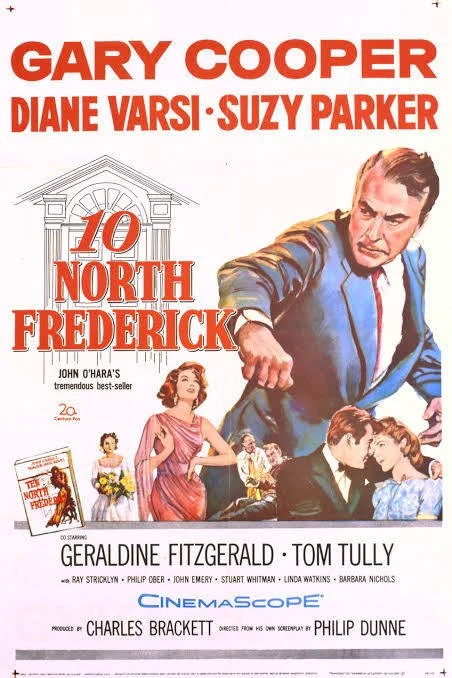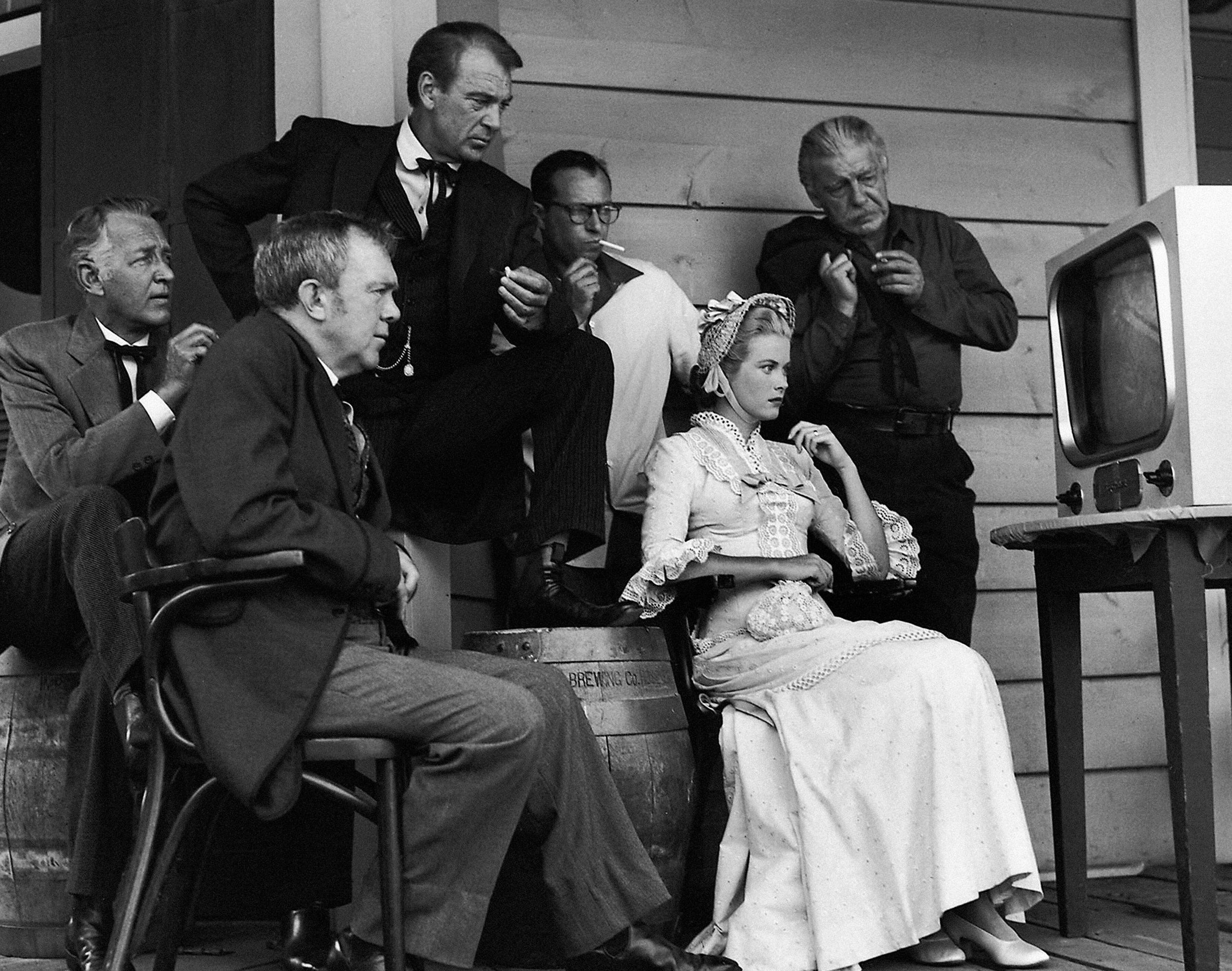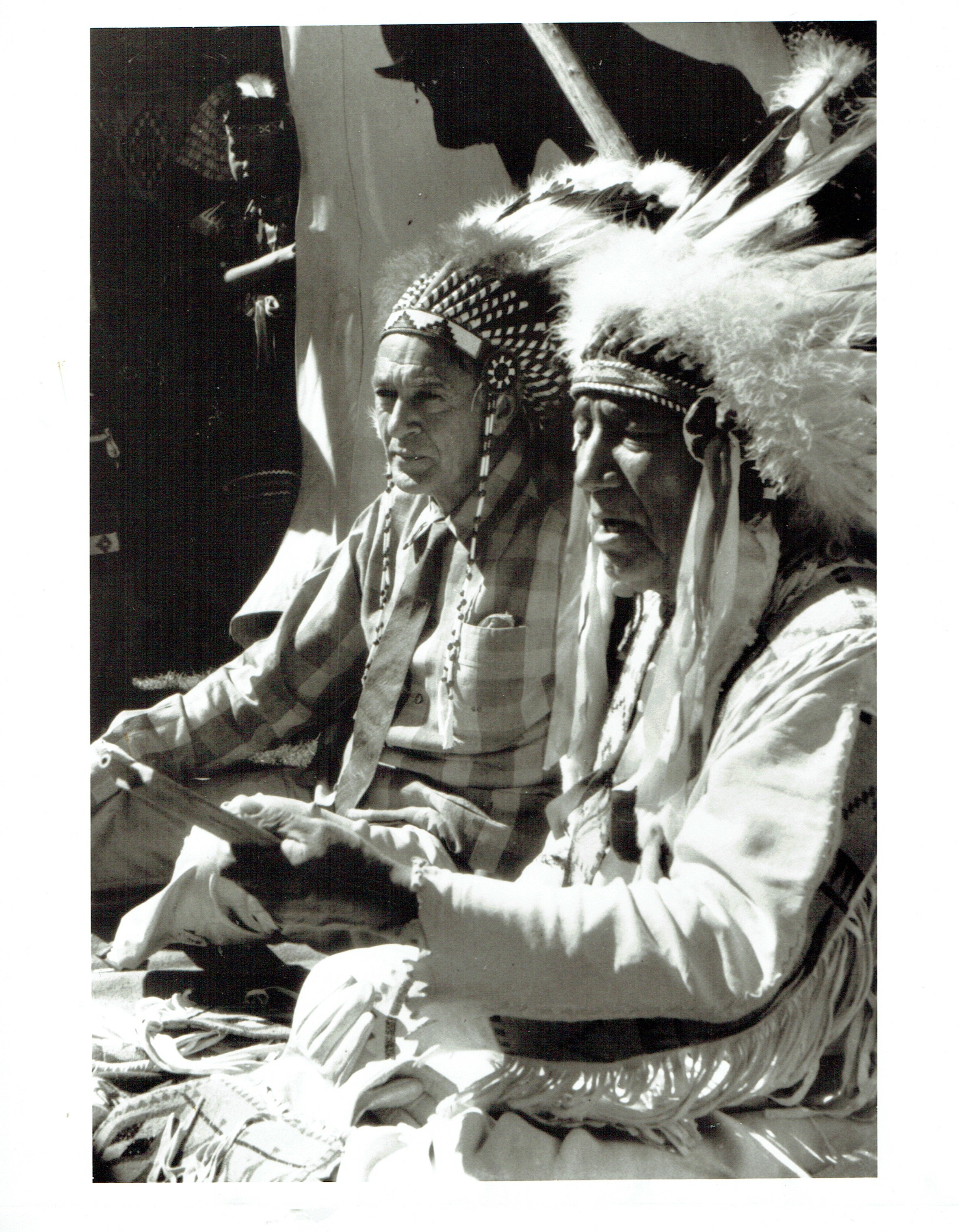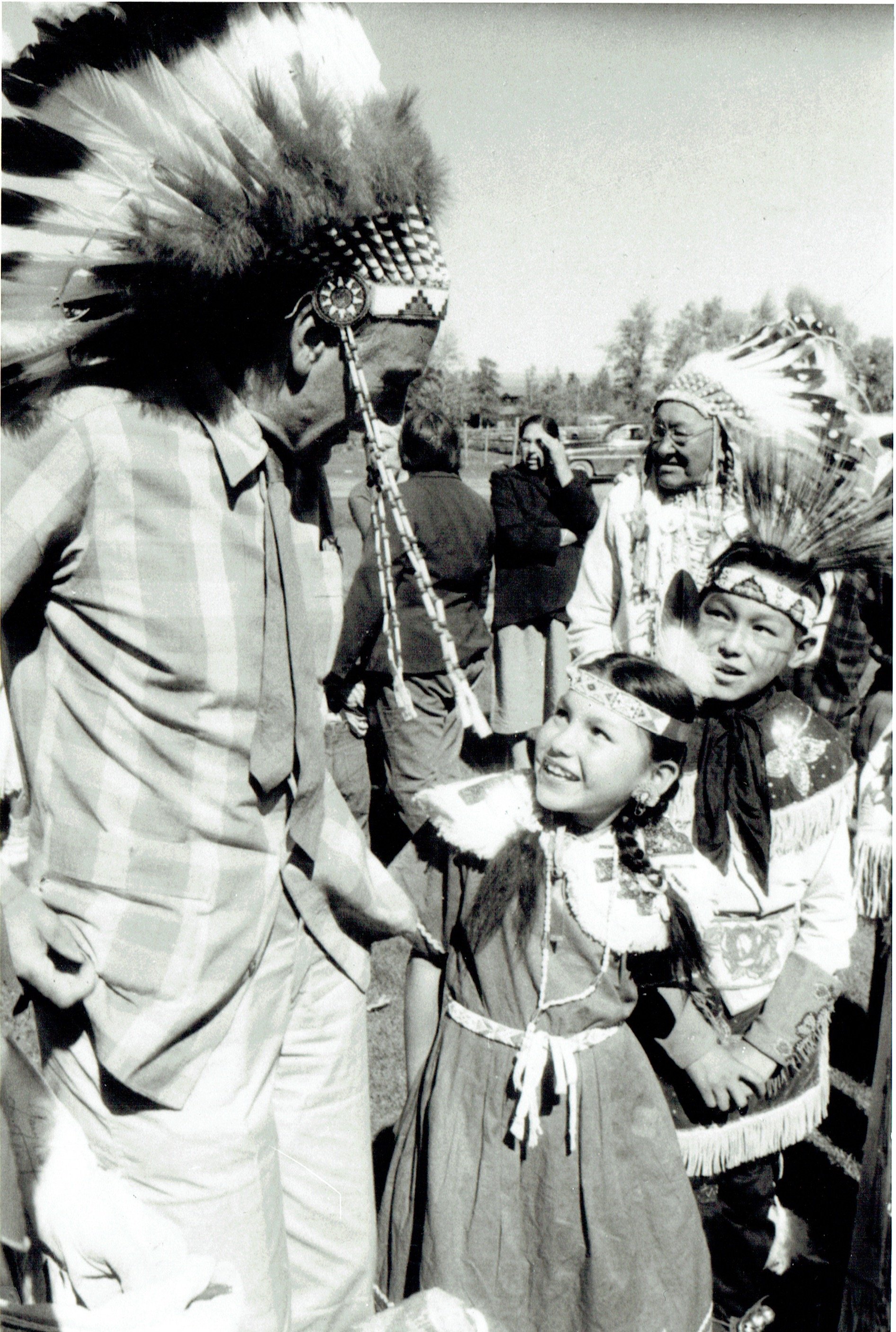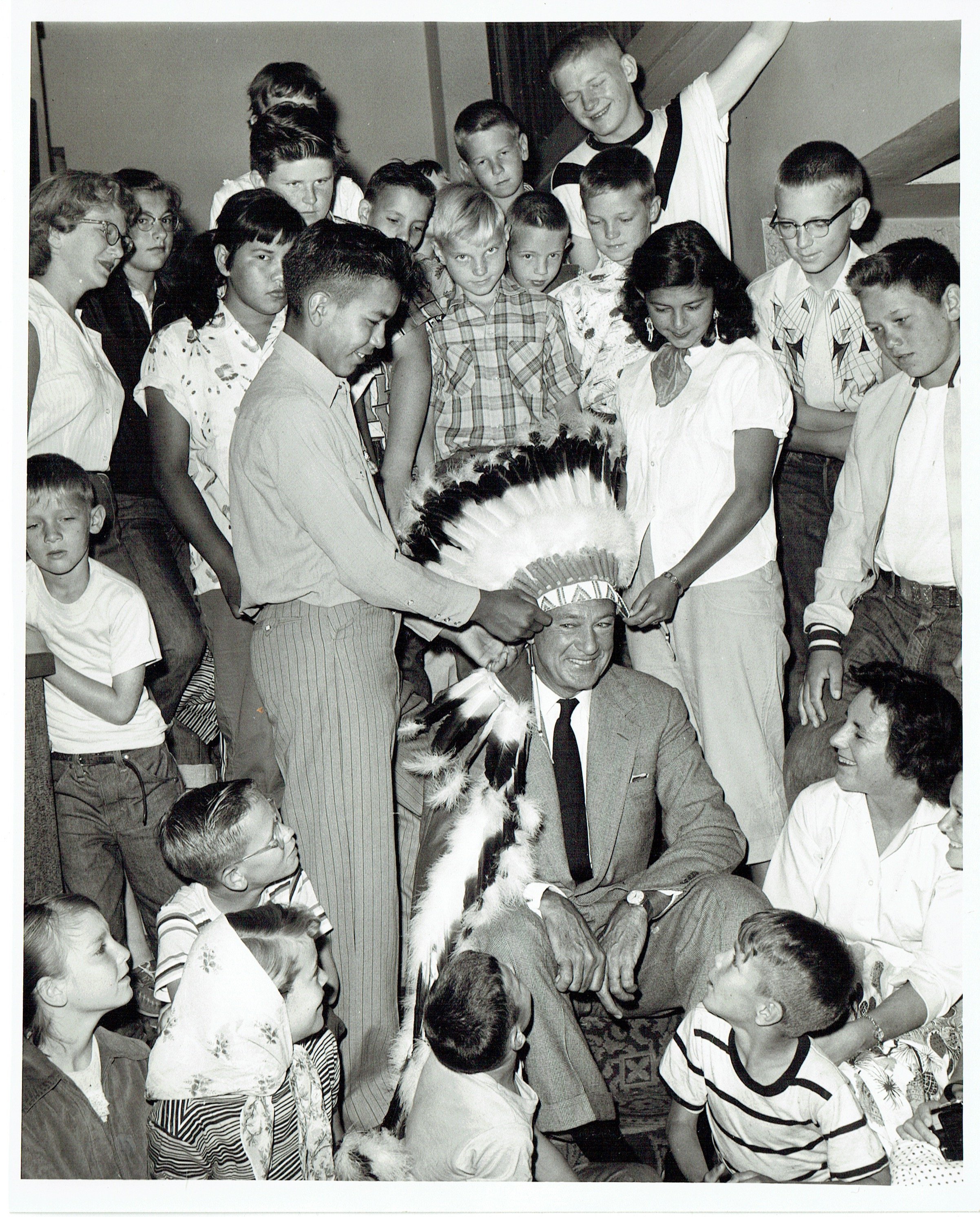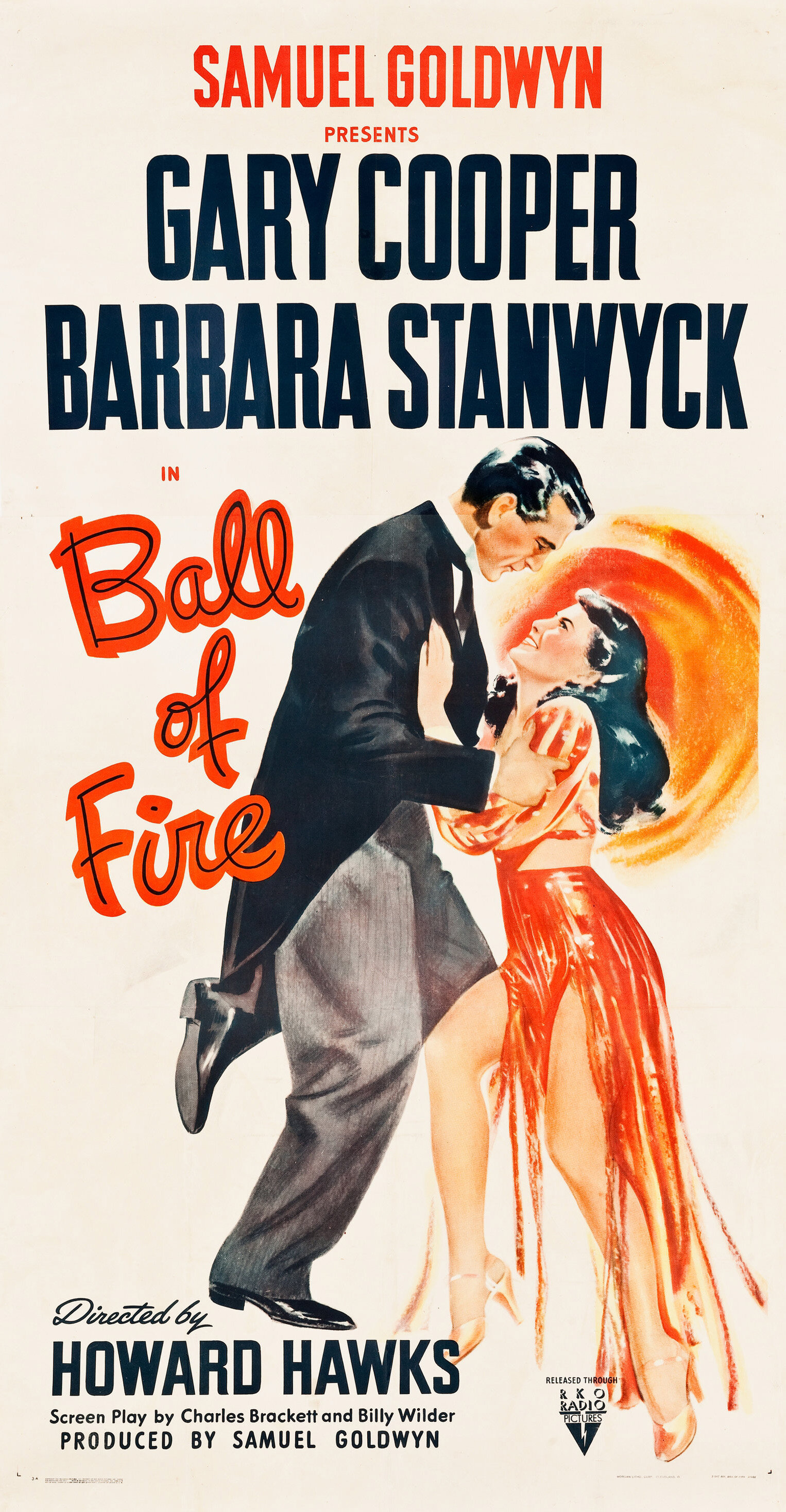10 North Frederick
Directed by Philip Dunne. 103 mins. (1958)
Gary Cooper – Joe Chapin
A wealthy, ambitious lawyer in 1940s Pennsylvania struggles to balance his political aspirations with the emotional distance in his family, and reflects on the personal sacrifices that shaped his life.
Also starring Diane Varsi, Suzy Parker, Geraldine Fitzgerald, Ray Stricklyn, Tom Tully, and Stuart Whitman.
The film is based on the 1955 National Book Award-winning novel by John O'Hara. In the novel, Ann Chapin has an abortion. That was considered too volatile for 1950s audiences, so in the film she has a miscarriage.
Nominated for a Golden Globe and winning Golden Sail at Locarno International Film Festival.
Tagline – The bold best-seller that tells the truth about the world of politics and the world of women!
MARIA’S NOTES
The persona of Joe Chapin in this story by masterful writer John O’Hara was a strange role for my father to take on. Instead of the hero striding into the sunset after having vanquished the “bad guys,” Joe Chapin is a tormented soul. He wants to keep his integrity but allows himself to “sell out” for ambition’s sake.
Marry that with a bitter wife and a need to find real love as his years creep up on him, and he falls in love with his daughter’s beautiful young roommate.
His dilemma makes me think of the verse in the Bible where St. Paul writes:
“I do not understand what I do. For what I want to do, I do not do. But what I hate, I do.”
He is a man cut down by his own desires and circumstances, and I think the story reflects—intensely—the human drama of many, many lives, both urban and suburban.
John O’Hara and Gary Cooper knew each other, and O’Hara said of my father’s performance that it was very much on target—sensitive and understanding of a man like Chapin: a conflicted soul who turns to alcohol to hide from his fears of losing power, and perhaps more importantly, the loss of his youth.
The young actor Ray Stricklyn, who plays his son, spoke of intensely observing Cooper and trying to catch the secret of his seemingly effortless “acting.”
In the film, his son’s final lines sum up the story. At his father’s funeral, he says:
“He was a gentleman, in a world that no longer respects gentlemen.”

